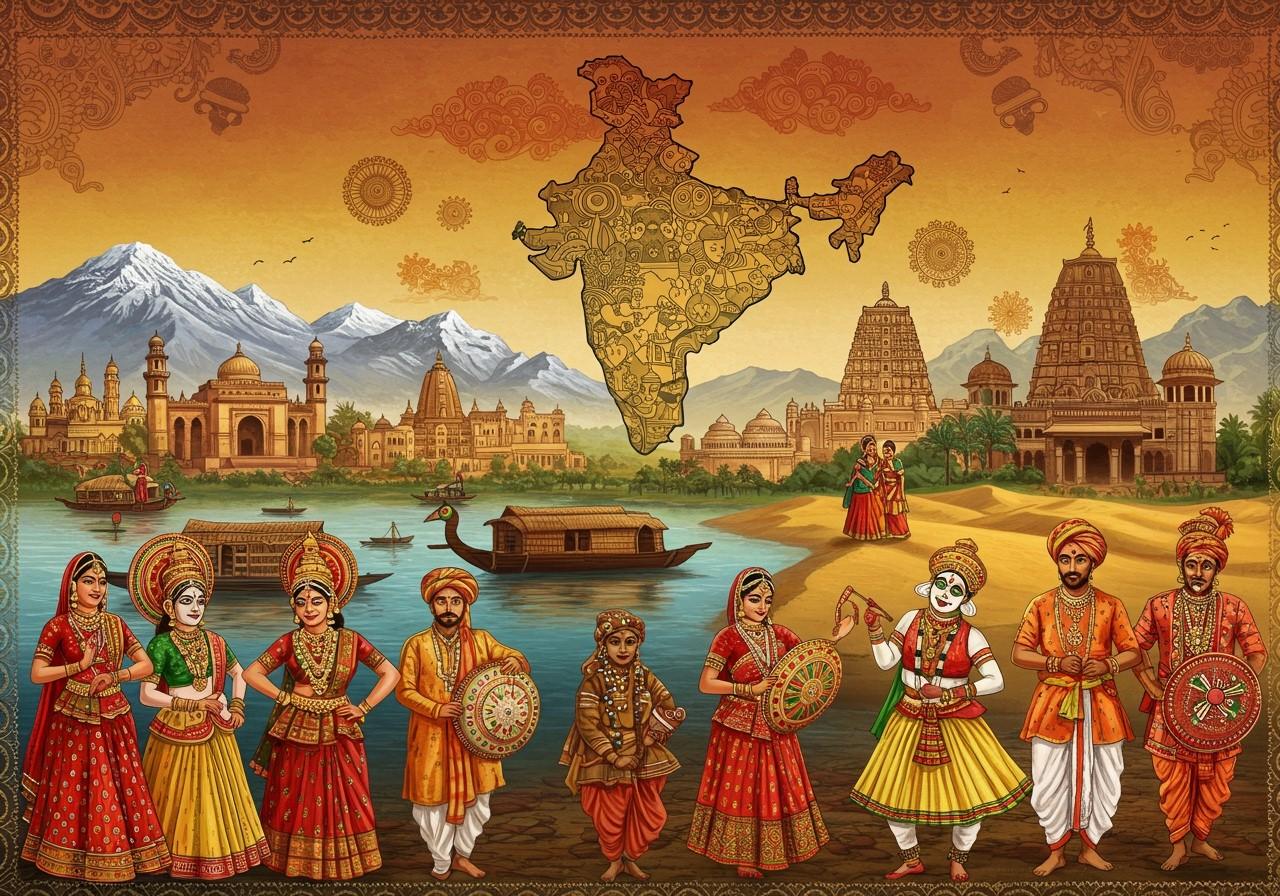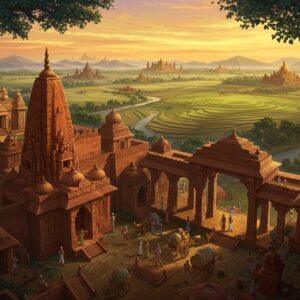Exploring India’s Diverse Landscape: A Guide to States and Union Territories

India, a land of vibrant cultures and rich history, is a fascinating mosaic of 28 states and 8 union territories (as of May 1, 2025). This intricate administrative structure reflects the nation’s commitment to both unity and diversity. Each state and union territory contributes uniquely to India’s overall identity, creating a tapestry of traditions, languages, and landscapes.
Deciphering the Structure
The Indian Constitution lays the groundwork for the division of the country into states and union territories. States enjoy a degree of autonomy, with their own elected governments led by Chief Ministers. They have legislative assemblies that create laws tailored to regional needs and priorities. Union territories, on the other hand, are administered by the Central Government, with a Lieutenant Governor or Administrator appointed by the President. This distinction ensures a balance between regional autonomy and central oversight.
The 7th Schedule of the Constitution outlines the distribution of powers between states and union territories, further defining their roles within the federal structure. This framework is essential to understanding India’s governance model, which strives to balance regional diversity with national unity.
States vs. Union Territories: Key Distinctions
The primary difference lies in the level of autonomy. States have their own elected legislative assemblies and Chief Ministers, enabling them to create and implement laws specific to their regional needs. This autonomy empowers states to address local concerns, promote economic growth, and preserve their unique cultural heritage.
Union territories are governed more directly by the Central Government through appointed administrators. Some union territories, like Delhi and Puducherry, do have legislative assemblies, but their powers are generally more limited than those of states. This distinction often reflects historical and strategic considerations, such as in the case of Jammu & Kashmir and Ladakh.
Categorizing States and Union Territories
India’s states and union territories are not monolithic. Some states, particularly those in the Northeast, are designated as “Special Category States” due to their unique geographical challenges or socio-economic needs. These states receive additional financial assistance and developmental support from the Central Government.
Union territories also exhibit variations in their administrative structure. Delhi, as the National Capital Territory, enjoys a special status with its own legislative assembly. Other union territories, like the Andaman & Nicobar Islands, are strategically important due to their geographical location and may have different administrative arrangements.
Cultural and Geographical Tapestry
India’s states and union territories showcase a remarkable diversity of cultures, languages, and landscapes. From the snow-capped Himalayas to the coastal plains of the South, each region boasts its own unique traditions and customs. This diversity is reflected in the variety of languages spoken, festivals celebrated, and cuisines enjoyed across the country.
For example, you can find Sindoor for your regional rituals on Poojn.in. We also offer Rudraksha malas and other items essential for various spiritual practices across India.
Economic and Political Roles
Each state and union territory plays a distinct role in India’s economic and political landscape. Some states are industrial powerhouses, driving economic growth and innovation. Others are agricultural hubs, contributing significantly to food security. Union territories, too, have important economic and strategic roles, often serving as centers for trade, tourism, or defense.
Poojn.in recognizes the diverse religious practices across India. We offer a wide range of products, including brass Lakshmi murtis, to cater to the spiritual needs of people from all regions.
Challenges and Future Prospects
India’s diversity presents both challenges and opportunities. Regional disparities in development require targeted interventions and policies to ensure equitable growth. Union territories may face unique governance challenges that require a delicate balance between central oversight and local autonomy.
Poojn.in is committed to supporting regional traditions. Explore our Sakha collection and other region-specific items to connect with your cultural heritage. We ship across India, ensuring that you have access to authentic puja items regardless of your location.
Celebrating Unity in Diversity
India’s states and union territories exemplify the power of unity in diversity. Each region, with its own distinct character and contributions, strengthens the nation as a whole. As India continues to evolve, understanding and appreciating this intricate administrative structure becomes increasingly important. It is a testament to the nation’s ability to embrace its rich tapestry of cultures, languages, and traditions while striving for collective progress.
FAQs: Delving Deeper into India’s Administrative Divisions
What distinguishes a state from a union territory? States possess their own elected governments and legislative assemblies, granting them greater autonomy compared to union territories, which are administered by the central government.
How many states and union territories does India currently have? As of May 1, 2025, India comprises 28 states and 8 union territories.
What is the rationale behind having union territories? Union territories often represent regions of strategic importance, smaller populations, or unique cultural characteristics that necessitate direct central administration.
Is it possible for a union territory to transition into a state? Yes, there is a precedent for union territories achieving statehood. Goa’s transformation from a union territory to a state in 1987 serves as a prime example.
Could you provide some examples of union territories in India? Delhi, Chandigarh, Puducherry, and Lakshadweep are notable examples of union territories, each possessing distinct cultural and geographical attributes.
Do all Indian states wield the same level of authority? No, the degree of autonomy varies among states. Certain states, particularly those located in the northeast, enjoy special provisions under the Indian Constitution that grant them greater autonomy.
What significance do India’s states and union territories hold? They serve as a reflection of India’s rich diversity and play a crucial role in effectively managing regional disparities in culture, language, and resources. Moreover, they are integral to the country’s governance and administration.
How does the governance of union territories differ from that of states? Union territories are administered by a Lieutenant Governor or Administrator appointed by the President of India, while states have elected Chief Ministers and legislative assemblies.


